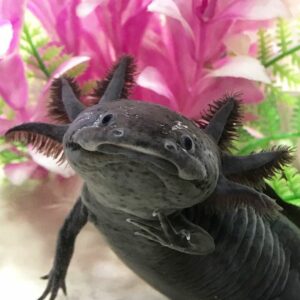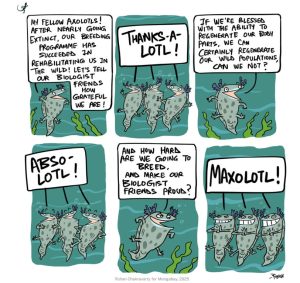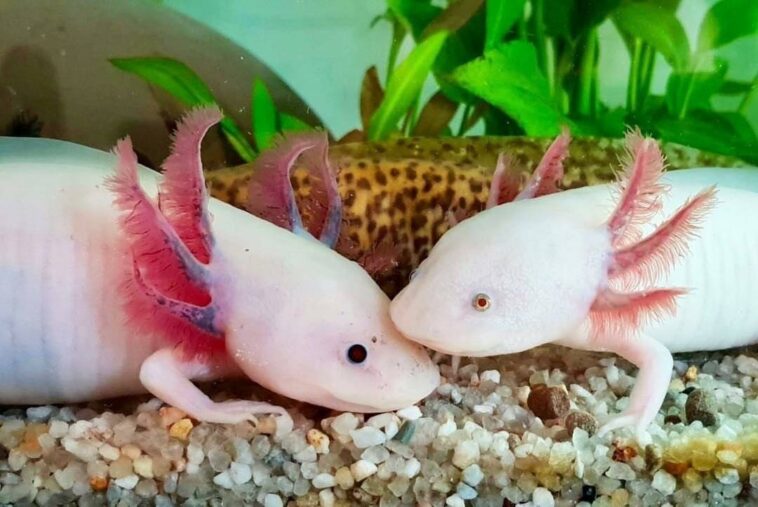Axolotl: The Mexican Wonder
Varieties and Origins
The axolotl is a type of salamander native to Mexico. Its scientific name is Ambystoma mexicanum. Unlike other amphibians, axolotls remain in their larval stage throughout their lives, a phenomenon called neoteny. They have distinct features like feathery external gills and a wide head with a smiling appearance.
Varieties:
- Wild Type: The natural coloration, typically dark with a mix of green, brown, and black.
- Leucistic: Pale pink with red eyes, often mistaken for albino but distinct due to their slightly different genetic makeup.
- Albino: Completely white with pink or white eyes.
- Golden Albino: Yellow-gold coloration.
- Melanoid: Darker pigmentation without any iridescence.
Origins in Mexico
Axolotls are originally from the lakes underlying Mexico City, especially Lake Xochimilco. These lakes are remnants of a vast system of water bodies that once covered much of the Valley of Mexico. Xochimilco remains the primary natural habitat for axolotls.
Popularity in the World
Axolotls have gained worldwide popularity for various reasons:
- Pet Trade: Due to their unique appearance and relatively easy care, axolotls are popular pets in many countries.
- Scientific Research: They are valuable in scientific research because of their remarkable ability to regenerate limbs, spinal cords, hearts, and other organs.
- Pop Culture and Anime: Axolotls appear in anime and video games, which helps spread awareness. For instance, they are featured in the popular anime series “Pokemon” under the character “Wooper” and in Minecraft as a tamable mob.
Endangered Status
The axolotl is critically endangered in the wild due to habitat loss, pollution, and the introduction of invasive species like tilapia and perch. Conservation efforts are ongoing, but the species faces significant threats. The population in Xochimilco is declining rapidly, making conservation efforts crucial.
Xochimilco
Xochimilco is famous for its canals, which are a UNESCO World Heritage site. These canals are also the last natural habitat of the wild axolotl. Efforts to conserve both the canals and the axolotl include breeding programs and environmental restoration projects.

Lifespans of Axolotls in Captivity and the Wild
In Captivity
Axolotls tend to live longer in captivity compared to their wild counterparts. The controlled environment, regular feeding, and protection from predators contribute to their extended lifespan.
- Average Lifespan: 10 to 15 years (that’s not bad)
- Factors Influencing Lifespan:
- Diet: A balanced diet including worms, insects, and specially formulated pellets helps in their growth and longevity.
- Water Quality: Clean water with proper filtration and regular maintenance is crucial.
- Temperature: Axolotls thrive in cooler water temperatures, typically between 16-18°C (60-64°F).
- Stress Levels: Minimal handling and a calm environment help reduce stress, which can positively impact their lifespan.
In the Wild
Axolotls in the wild face numerous challenges that can significantly reduce their lifespan. These include habitat destruction, pollution, and the presence of invasive species.
- Average Lifespan: 5 to 10 years
- Factors Influencing Lifespan:
- Predators: Invasive species such as tilapia and perch prey on axolotls and compete for food resources.
- Habitat Loss: Urban development and pollution in their native habitat, Lake Xochimilco, have drastically reduced their numbers and living conditions.
- Water Quality: Poor water quality due to contamination and reduced water levels in their natural habitat negatively impact their health and survival.
Key points
- Axolotls are unique salamanders native to Mexico, especially Xochimilco in Mexico City.
- They remain in their larval stage for life, a trait known as neoteny.
- There are various color varieties, including wild type, leucistic, albino, golden albino, and melanoid.
- They are popular worldwide as pets, in scientific research, and in pop culture.
- Axolotls are critically endangered, primarily due to habitat loss and pollution.
- Conservation efforts are crucial to protect the remaining wild populations in Xochimilco.
For more detailed information, you can visit sources like National Geographic and Smithsonian Magazine.

Proyecto para rescatar ajolotes en Xochimilco




